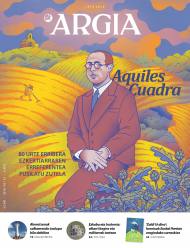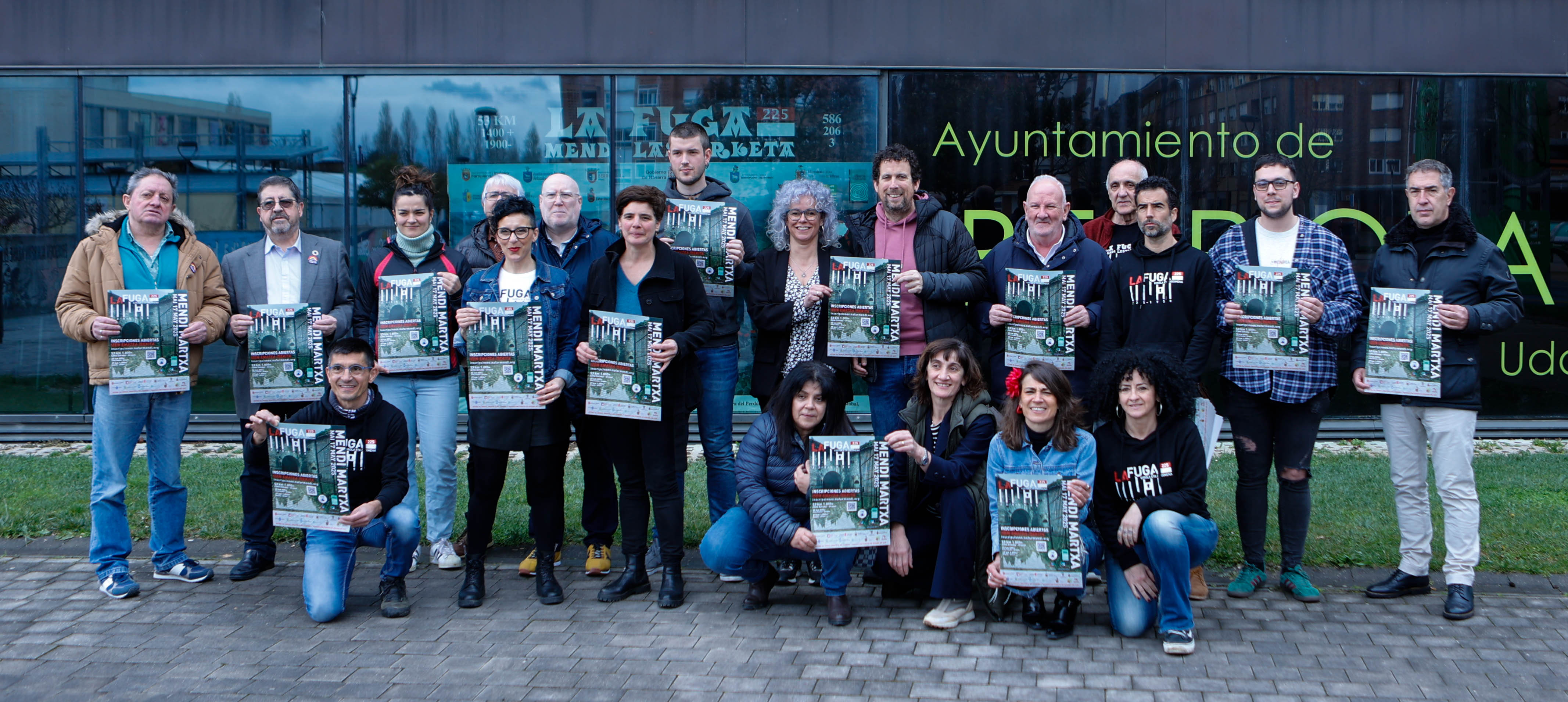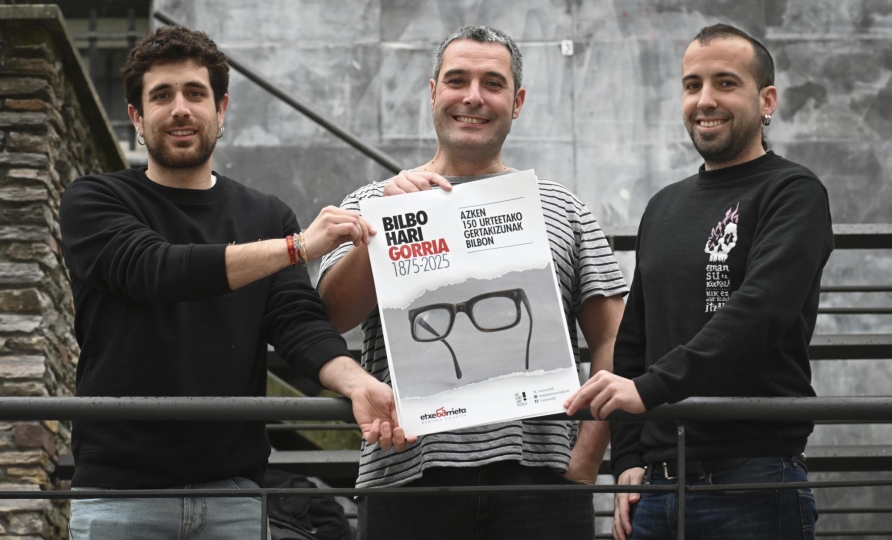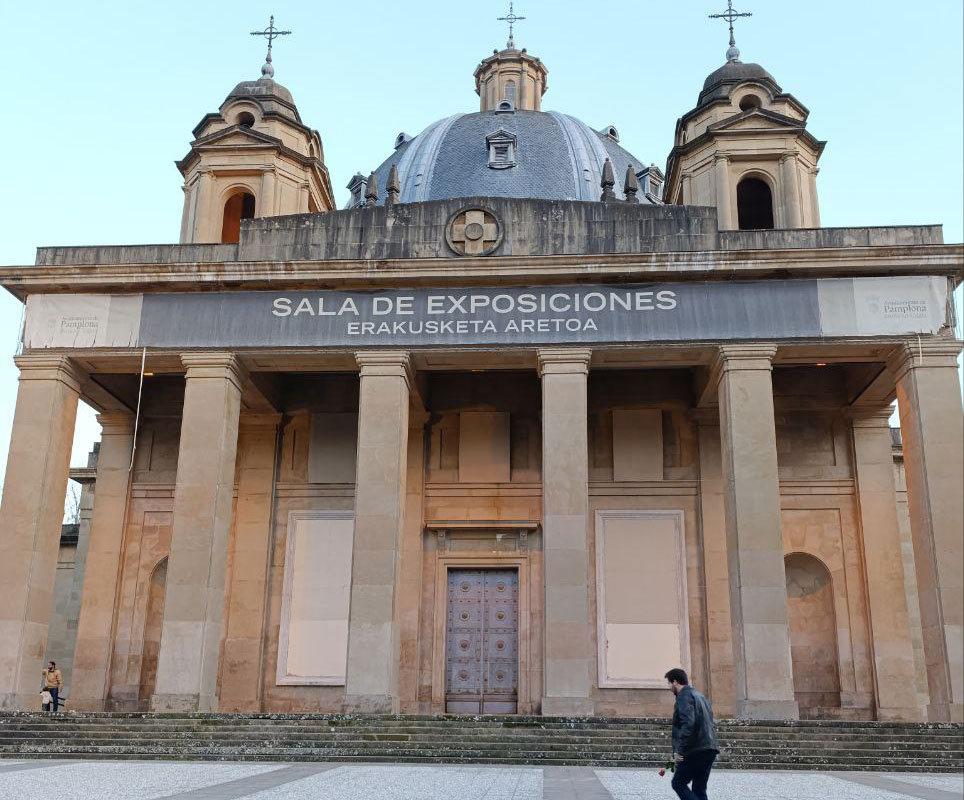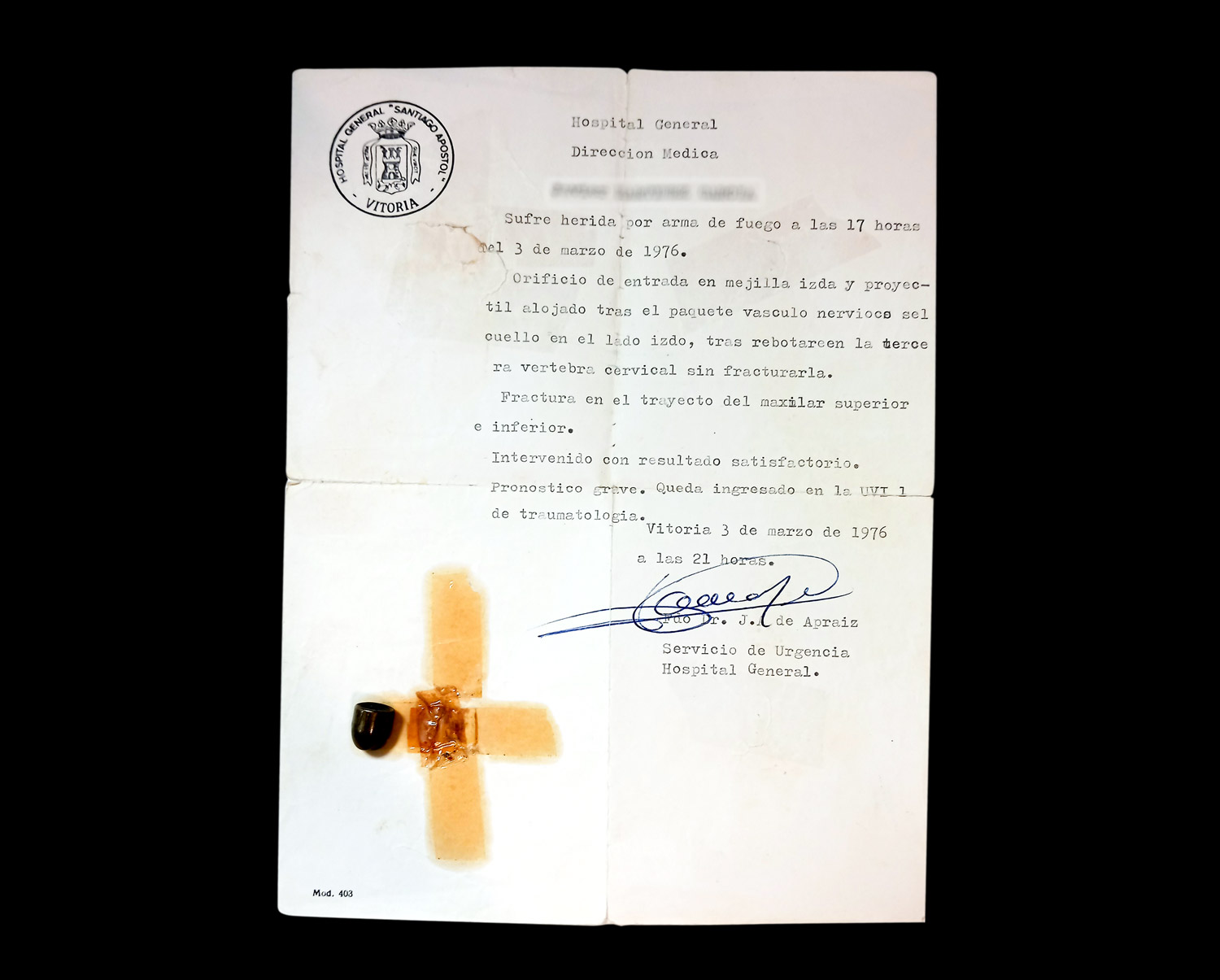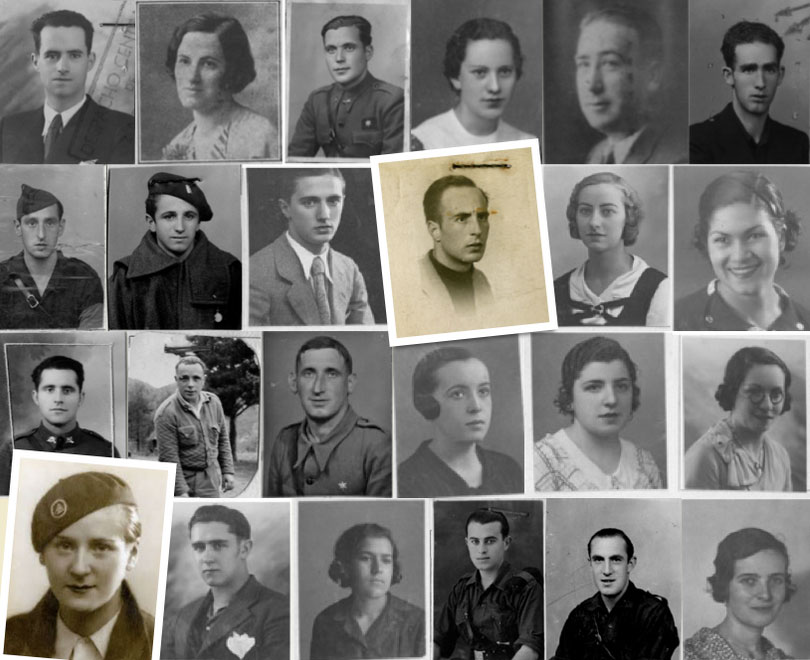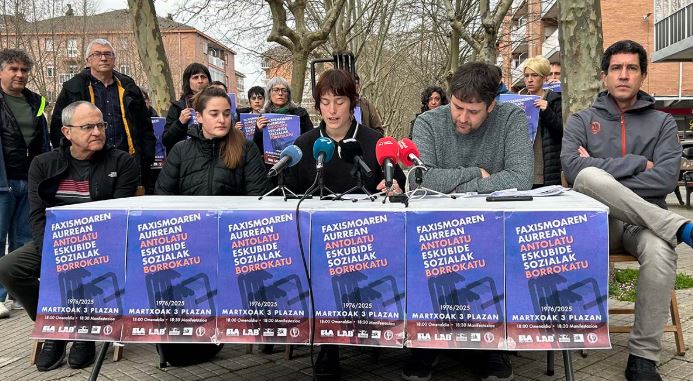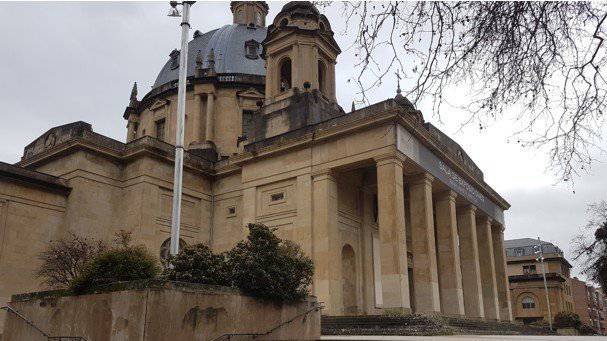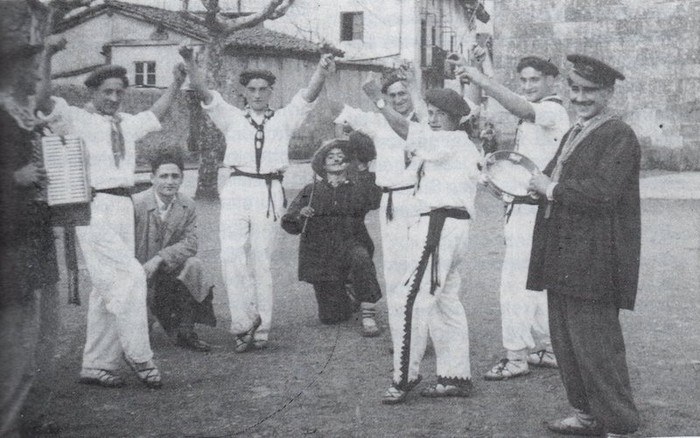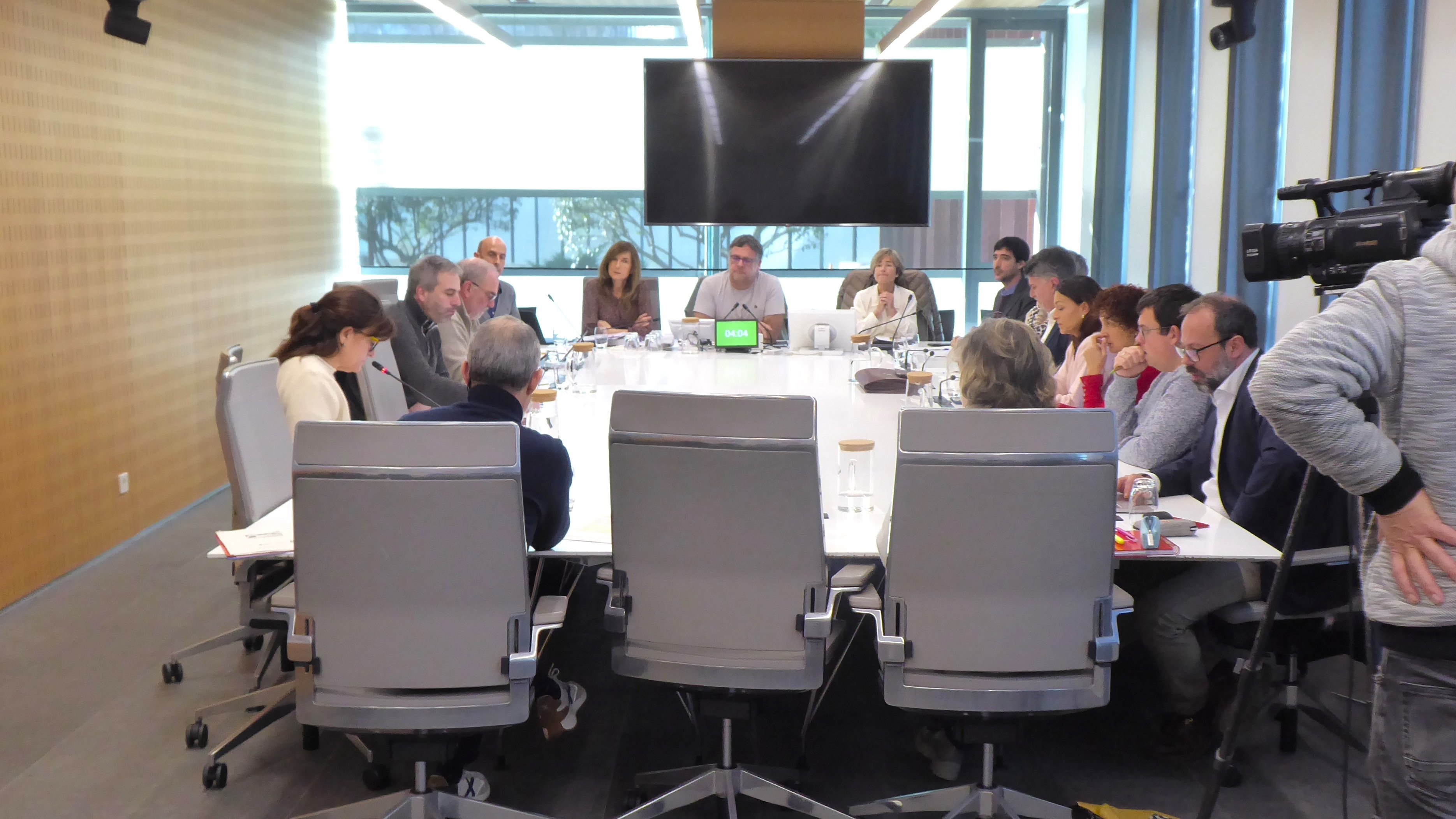Aquiles Cuadra: death bells in the Ribera
- Aquiles Cuadra, lawyer and mayor of Tudela, was one of the largest referents of the left in the Ribera in the second Republic. Since 1936 he was the only one who had a trial among dozens of people shot by the fascists in that city: the long trial against him is a sign of Francoist injustice. 80 years later, through his dossier, we have the opportunity to learn about the revolutionary and repressive environment of southern Navarre.
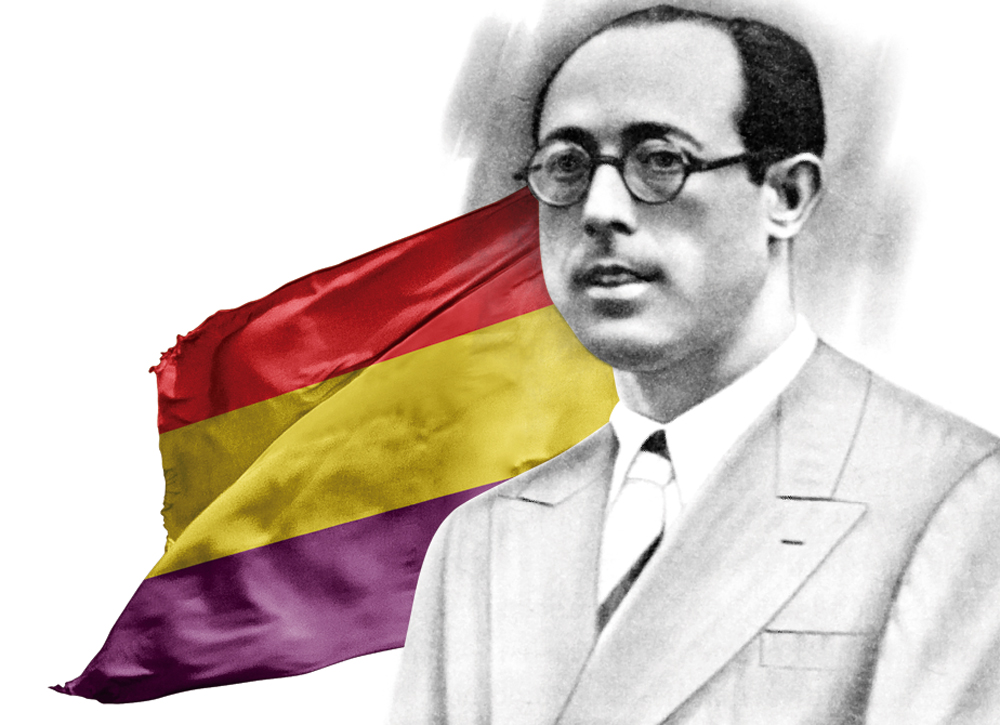
"The Republican Left was one of the main political leaders of the Popular Front of Navarra, especially in the district of Tudela. He participated in numerous rallies, using solvent concepts, igniting hatred among social classes and bringing the masses to violence.” Thus was described by the examining magistrate Juan Hidalgo in March 1937 by Aquiles Cuadra de Miguel, words that showed only one and only address to the court that had brought the war council against him: He was shot in Pamplona on 19 October 1939, when the bells of six in the morning rang.
But the death was already accustomed to the bells in Pamplona, Ribera and all of Navarra, due to the brutalities committed by the requetés and falangistas in the rear. However, the case of the former mayor of Tudela showed that no one was saved from the claws of the new dictatorial regime, despite the support of prominent francoists. Ricardo Urrizola War Council. Military injustice in Navarra 1936-1940 (Txalaparta, 2017) has detailed the file of Aquiles Cuadra, so far guarded at the Military Command of Navarra. He has also found letters in his favor to people with relevant charges, as well as evidence of their innocence and incidences in the most elementary judicial errors. And yet he was sentenced to death.
This dossier is worth gold, because in addition to covering the real face to the justice of Franco, it suggests that in the Ribera there was a strong leftist and republican movement, which has been forgotten many times in the history books and in the accounts about that civil war. In the afternoon of July 18, 1936, at the Plaza de los Fueros de Tudela, where he still remained trying to cope with the Falangists departing from Corella, including Aquiles Cuadra.
Republican Mayor
Achilles is a young man who started his political career very quickly. Progressive and secular ideas came from the family. His grandfather was liberal -- in the 19th century. He came to Tudela in the 18th century to administer the palaces and lands of the Marquis of San Adrián, and his father, the well-known lawyer Ruperto Cuadra, inherited that progressive thinking: a supporter of public education, a promoter of the savings bank and founder of the Autonomous Republican Party of Tudela.
 Achilles will follow the footsteps of his father, both in the world of law and politics, and will quickly become a Republican reference in the Bank. With the arrival of the Second Spanish Republic, he contributed to the creation of a branch of the Socialist Radical Republican Party in Navarre – then joining the Republican Left – and made every effort to push forward the agrarian reform.
Achilles will follow the footsteps of his father, both in the world of law and politics, and will quickly become a Republican reference in the Bank. With the arrival of the Second Spanish Republic, he contributed to the creation of a branch of the Socialist Radical Republican Party in Navarre – then joining the Republican Left – and made every effort to push forward the agrarian reform.
In rural Navarre there were great social inequalities as a result of the power accumulated over many years by journalists. Also in Tudela (11,000 inhabitants), the oligarchy of the city was composed of a large number of peasants – 37% of the electoral roll of 1930 – and a few large landowners. The shortage of schools in these areas of the Ebro causes only teachers to choose and enrol “more suitable” children, as can be read in local chronicles. Thus, almost half of the casual workers did not know how to write or read, and the percentage of illiterates in Tudela was higher than in Navarra. It is not surprising, therefore, that the demands for fairer land distribution have a great deal of strength.
In 1931, the leftist bloc comfortably won the elections in the capital bank, with Aquiles Cuadra as one of the main representatives. In the headlines of the Astekai Today we can find the plebiscitary character of these voices: “Republic or Monarchy? Tudela decides: The Republic!” The magazine was led by the lawyer himself, who promoted regime change in La Ribera, and was rejected by the Hearing. Cuadra, who was mayor of Tudela between 1932 and 1934, continued in the position of councilor until in 1936 he was beaten by the fascists. Among them was the debate and the vote on the complicated issue of the Estella Statute, which, like many other Navarros politicians, ended up showing a favourable attitude.
The bank was different
The socialist revolution in the Spanish State in October 1934 failed and the repression was also noticed in Navarre – Ezkaba’s fort began to be used as a prison for the first time. On the contrary, this serious situation led to the February 1936 elections bringing together various sectors of the Left in the “Popular Front” coalition. On the eve of the election day, the Teatro Cervantes de Tudela brought together 2,500 people, including María Luisa Domingo, the communist leader Jesús Monzón, the syndicalist Ramón Bengaray and the candidate Aquiles Cuadra, who firmly defended communal lands and currents. But participating in these kinds of events was going to be expensive later.
Due to the shortage of schools in these areas of the Ebro, only teachers selected and enrolled children “more suitable”. It is not surprising, therefore, that the demands for a fairer distribution of the land have a great deal of force.
The victory of the Popular Front was the perfect excuse for the reactionary right, the conspiracy camp that General Golpist Mola established in Navarra, in the territory of the Catholic militias in weapons: “The Carlist Requetés are an army equipped in a modern and armed way to the teeth. (…) With these troops, Navarre will fall under the terror of the fascists,” said the Madrid press worker.
But the Ribera was different, “due to certain social injustices”, as recognized by the chief of the requetés, Antonio Lizarza. Therefore, although around a thousand berets were mobilized in the region, the Falangists had a greater intervention in Tudela's merinity during the bloody summer of 1936.
Bad Spanish
On the afternoon of July 18, Falangists from Corella were shot by the Republicans gathered in the Plaza de los Fueros de Tudela. However, within a few hours, a commander of the civil guard read a war camp extracted from the press of the Diario de Navarra under flashlights and the fascist repression spread throughout the Bank in the coming days. The historian Fernando Mikelarena in Navarra. From the book From Hope to Terror, big data starts: In Lodosa, 133 people died, in Mendavia 99, in Peralta 89, in Corella 87, in Sartagudo 84… and in Tudela 64 people. Many of them were released from Tudela prison and shot without further delay, killing 40 per cent of the 640 prisoners held in it. In Navarre, all this information has been updated for a long time, both in the Memory Documentation Center and through other investigations, and the figures seem even more terrible.
.jpg)
Everyone who did not share this terror was taken as traitor: “There are men who continually spread criticism and rumor. It is necessary to leave these bad Spaniards alone because their company pollutes,” said the newspaper Falange de Tudela. Recently, the City of Tudela has obtained a document in which the scope of the repression can be assessed: List of families or “jokes” expelled from the municipality on August 14, 1936. It was held by the Pérez-Nijos family, along with other roles about civil war, and now they will digitize it to keep it in the municipal archive.
For Emilio Majuelo, in Tudela there was a broad social fabric and great political mobilization, but all that was “dismantled” in a few months, which marked the city for decades: “The life of an entire generation sank and became the sad, mansa, forgotten and mansa city that we have known for years,” said the historian of the UPNA at a conference organized on the occasion of the 1936 War. The editor José Mari Esparza has also highlighted the gap that the war had created in the Ribera, as those who defended the Basque and Navarre conditions ended “in exile or in the ditch”.
From Pamplona to Seville
Achilles Cuadra immediately saw that the defeat of the military coup would bring war and that the fascists would not have mercy on those who remained in the rear. On the evening of 18 July, he spoke to the officials of the Tudela Civil Guard and realized that they too would stand alongside the rebels as soon as they could. He had not spent the night at home; Accompanied by his friend Manuel Ucar and his son, the former mayor rushed away early in the morning. They ended up in a mass grave of Fontellas four months later.
He first went to Alfaro and then to Vitoria-Gasteiz, where the military garrison of Álava had not yet come to the street. His aim was to cross the entire Spanish state by hiding in the homes of his friends, to “put him at the service of the Republic”, according to his nephew Enrique Cuadra, who has produced his biography.
.jpg)
Thus, he moves to Miranda de Ebro, then he will stay for a while in León in several accommodations, also in Medina del Campo, and finally in December 1936 he will arrive in Seville. In the Andalusian city, a priest will meet him and will be denounced when he is accused of witnessing a ball game in which he played wisely. During the time it took to be arrested, his parents and sister were arrested, as the hunger for Francoist persecution often hit the relatives of the fugitive.
“Caudillo of the Republican masses”
A month after his arrest, already in Pamplona prison, military justice opened a dossier against him. Cuadra was accused of organizing an attack on the Falangists in the village of Tudela. The commander of the Civil Guard of that city and the board of directors of the militia Citizen Action wrote two reports with very harsh words. “Secular and immoral life”, “propagandist”, “caudillo de la masa republicana”… She was blamed for being La Ribera republicana: “It could be said that the preponderance and attitude of the left in the district of Tudela was the influence and preaching of Mr. Cuadra.”
Achilles Cuadra accused the Ribera of being a Republican: “It could be said that the preponderance and attitude of the left in the district of Tudela was the influence and preaching of Mr. Cuadra”
Achilles Cuadra abandoned the concrete accusations against him in the statements made to him from prison. Thus, he stated that the day of the uprising “did not bother the masses” and that it had nothing to do with the transfer of the head of the civil guard of Tudela or with the assault on the Provincial Council of Navarre by a left-wing group on 6 March 1936. But the investigating judge did not listen to him and prosecuted him for a crime of “military rebellion.” The lawyer tried to abolish these crimes: that the war camp was later, that in the case of the Court of Tudela its name does not appear… in vain. “On the historic day of July 18, 1936, the glorious army entered into arms against Spain’s only legitimate power,” said the prosecutor of Burgos.
On 10 November 1937, the war council was held against him. On that day, known characters from Navarre declared in favor of Cuadra, saying that he was “of order” and “away from violence”. Among them were Secretary of General Mola, José María Iribarren or Count of Rodezno, Tomás Domínguez, head of the Carlists of Navarra. However, the penalty was expected, and although due to a procedural error the war council had to be repeated, the fate of Achilles Cuadra was already written: death.
Waiting for death
On 19 January 1938, the court signed the final sentence, but was almost two years in jail pending its execution. Why? In his book, Ricardo Urrizola suggested that the Count of Rodezno intervened, since by then he was Minister of Justice. But in 1939, when Franco remodeled his government, Esteban Bilbao Eguía took office and the auditor immediately received the sentence execution order.
In jail, while waiting for his cruel appointment with death, Cuadra was with several personalities. He shared the cell with the Navarro painter Javier Ciga and left for his memory a pencil portrait. He also became a friend of Pello Irujo, a politician of EAE-ANV, who later assured him that the guardianship attorney confessed that Navarre would be saved in the Basque Country, “even if the war ends as it ends”.

18 October 1939, Pamplona Prison. The judge has quoted Aquiles Cuadra to sign the sentence, according to the same source. He will refuse. They'll die the next day near the citadel's emergency door. According to witnesses, many of the prison inmates heard the detonations between tears. The war had ended six months ago.
On the facade of the Town Hall of Tudela, a plaque reminds of the 19 public officials shot by the francoists in that town, “so that they do not die in silence and oblivion.” There's the name of Achilles Cuadra De Miguel.
Ibilbide sutsua izandako politikari tradizionalista bilbotarra, gerra hasi zenean atxilo hartu zuten errepublikarren Altuna Mendi ontzian, baina presoen trukaketa bati esker faxisten aldera pasa zen. Berak asmatu zuen Franco, Caudillo de España por la gracia de Dios leloa, erregimenaren txanponetan irakur zitekeena.
1939ko abuztuaren 9an izendatu zuen Francisco Francok bere gobernuko Justizia ministro eta kargu horretan egon zen garaian –1939tik 1943ra– heriotza-agiri ugari sinatu ziren. Euskal Herrian errepresio frankistaren eragile nagusietakoa izan zen. Bilbao ministro jarri orduko Aquiles Cuadraren exekuzio agindua bete zen, ia bi urte geldirik egon ondoren.
2014an EHUko txosten batek agerian utzi zuen Bilboko urrezko domina eman zitzaiola 1947an eta udalak seme kuttuntzat zuela; hortik urtebetera udal korporazioak bertan behera utzi zituen sari horiek.
Erriberan fusilatu zituzten lagunen gehiengoa ez zen kargu publikoa edo politikaria, jornalari edo herritar xehea baizik, Aquiles Cuadraren etxean lan egiten zuen Jesusa Ruiz Melero bezalakoa. Aurretik loteria saltzaile ibilia, alargundu zenean jarri zen alkate-ohiarentzat zerbitzari.
Emakume hark ez zuen bere etxeko jaunak baino zorte hoberik izan: 1936ko azaroaren 14an hil zuten, epaiketarik gabe. Batzuen esanetan, “propaganda ezkertiarra” banatzeagatik, bestetzuen ustez “bandera errepublikarra eskegi zuelako”. Ablitasen jaioa, 37 urte besterik ez zituen eta alaba bat utzi zuen umezurtz. Bere izena ez da lerroburu handietan ageriko, bai ordea Sartagudan dagoen Memoriaren Parkeko zerrendan.
Kirola eta oroimena uztartuko dituzte, bigarrenez, mendi-martxa baten bitartez. Ez da lehiakorra izanen, helburua beste bat delako. La Fuga izeneko mendi martxak 1938ko sarraskia gogorarazi nahi du. Ezkabako gotorlekuan hasi eta Urepelen amaituko da. Maiatzaren 17an eginen dute.
Fusilamenduak, elektrodoak eta poltsa, hobi komunak, kolpismoa, jazarpena, drogak, Galindo, umiliazioak, gerra zikina, Intxaurrondo, narkotrafikoa, estoldak, hizkuntza inposaketa, Altsasu, inpunitatea… Guardia Zibilaren lorratza iluna da Euskal Herrian, baita Espainiako... [+]
Gogora Institutuak 1936ko Gerrako biktimen inguruan egindako txostenean "erreketeak, falangistak, Kondor Legioko hegazkinlari alemaniar naziak eta faxista italiarrak" ageri direla salatu du Intxorta 1937 elkarteak, eta izen horiek kentzeko eskatu du. Maria Jesus San Jose... [+]
Familiak eskatu bezala, aurten Angel oroitzeko ekitaldia lore-eskaintza txiki bat izan da, Martin Azpilikueta kalean oroitarazten duen plakaren ondoan. 21 urte geroago, Angel jada biktima-estatus ofizialarekin gogoratzen dute.
Bilbo Hari Gorria dinamikarekin ekarriko ditu gurera azken 150 urteetako Bilboko efemerideak Etxebarrieta Memoria Elkarteak. Iker Egiraun kideak xehetasunak eskaini dizkigu.
33/2013 Foru Legeari Xedapen gehigarri bat gehitu zaio datozen aldaketak gauzatu ahal izateko, eta horren bidez ahalbidetzen da “erregimen frankistaren garaipenaren gorespenezkoak gertatzen diren zati sinbolikoak erretiratzea eta kupularen barnealdeko margolanak... [+]
1976ko martxoaren 3an, Gasteizen, Poliziak ehunka tiro egin zituen asanbladan bildutako jendetzaren aurka, zabalduz eta erradikalizatuz zihoan greba mugimendua odoletan ito nahian. Bost langile hil zituzten, baina “egun hartan hildakoak gehiago ez izatea ia miraria... [+]
Memoria eta Bizikidetzako, Kanpo Ekintzako eta Euskarako Departamentuko Memoriaren Nafarroako Institutuak "Maistrak eta maisu errepresaliatuak Nafarroan (1936-1976)" hezkuntza-webgunea aurkeztu du.









